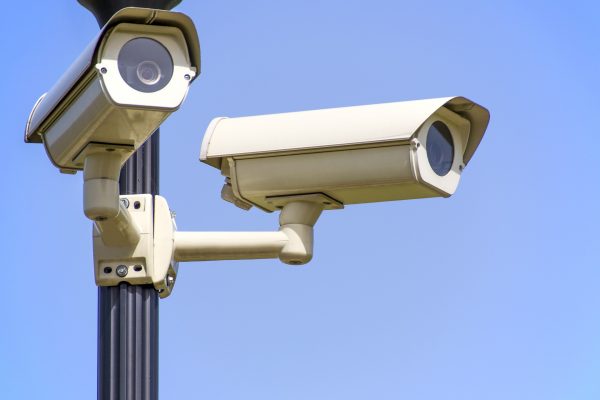It is becoming more and more common for employers to install surveillance cameras in the workplace and there are a number of reasons for this; from preventing and deterring criminal activity, providing extra security for premises, monitoring employees’ behaviour and performance, and to improve safety for employees and visitors to the workplace.
Types of Surveillance
Surveillance in the workplace can consist of several mediums, including:
- computer surveillance (like apps allowing remote access, monitoring of emails),
- camera surveillance (commonly CCTV),
- tracking surveillance (such as GPS on a vehicle), and
- listening devices (including tablets and smart phones).
Both the Federal Privacy laws and state-level Surveillance Acts are relevant when we are talking about surveillance in the workplace. It’s important to have some understanding of how these may impact your business to not only offer protection, but to ensure you have the full benefit of the surveillance you have in place, should you ever need to use it.
Is it Legal to Carry out Monitoring or Surveillance on Employees?
Employers are within their legal rights to carry out surveillance on employees in the workplace, within reason.
The Surveillance Devices Act 1998 (WA) regulates the use of surveillance devices in Western Australia, stipulating restrictions around the communication and publication of information obtained through the use of surveillance devices.
Consent is key here.
We’re talking about the subject of the surveillance, whether that be an employee or a visitor to the workplace, having reasonable knowledge of the surveillance and through either written acknowledgement or other behaviours indicating their acknowledgment, and consent to being under surveillance.
In many cases, the effective use of a recording, if presented as evidence for example, can be limited or disregarded if unable to show that consent has been given.
Federal Privacy legislation covers how we collect, use and store personal information. In terms of surveillance, it goes without saying (but we will state it to be clear) that you are not legally permitted to have surveillance operating in private areas such as showers, toilets and changerooms.
Installing CCTV – What you Need to Know
Closed Circuit Television (CCTV) is a TV system in which signals are not publicly distributed but are monitored. This technology is familiar to most people, and is prevalent in our day to day lives, both at work and in many public places.
Although surveillance systems are typically installed to protect against potential theft and criminal activity, there are many reasons why businesses decide to go down the path of installing CCTV systems. Regardless of the motivation for installing surveillance in your workplace, it is very important that anyone who is being recorded on CCTV, or any other surveillance device, is aware of this. The most simple and effective way is to out up a sign in the area, stating “CCTV in use” or “You are being recorded”.
What About Employees Recording Other Employees’ Activities, or Meetings?
It has never been easier to take camera footage or voice recordings with almost everyone in possession of a smart phone capable of quickly, and often covertly, capturing activities and conversations.
Having a robust and detailed policy in your workplace covering what is and isn’t acceptable in terms of IT and social media use, is an effective tool for employers to not only protect their employees but also protect the business. Effective policies can help make employees aware of expectations, reducing the chance of bullying and harassment, deterring employees from recording others without their consent, and preventing the publishing or public posting of inappropriate content that may be linked to the business.
What is Express and Implied Consent & Why is it Important?
Express consent is given explicitly, either orally or in writing.
Implied consent means consent may reasonably be inferred in the circumstances from the conduct of the employee.
It is not only best practice, but an employer’s legal obligation to obtain employee written consent or acknowledgement of notification of surveillance in the workplace. An appropriate way to do this is to create a Workplace Surveillance Policy, and present it to all employees for review and acknowledgement. Alternatively, an internal communication clearly explaining the purpose and clarification for employees on expectations and responsibilities is suitable, providing that employees respond to acknowledge their understanding and acceptance.
There are cases where recordings presented as evidence are dismissed, as the people involved had not been aware of the surveillance, or had not provided consent to their being recorded.
Our Top Tips for Using Surveillance in the Workplace
If you’re thinking about installing CCTV cameras or already use surveillance in your workplace, we believe these points below are essential.
- Ensure cameras are clearly visible, perhaps placed at every entrance and primary areas of work, to promote implied consent.
- Place signage such as “CCTV cameras in use” near the cameras to let employees and visitors know they are being recorded.
- Advise your employees in writing about surveillance devices in the workplace and request return written acknowledgement.
- Clearly explain your expectations of employees in the workplace and their responsibility for upholding the organisation’s legal obligations.
- Never place surveillance devices in private areas such as any change room, toilet or shower or other bathing and changing facilities.
If you have any questions about your responsibilities around surveillance in the workplace contact our specialist team for a no obligation chat today.

